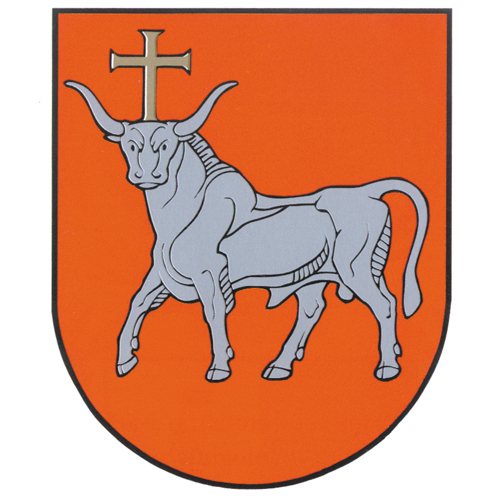Former Leliugai homestead (non-surviving), which was rented by the Kymantas family; Karklėnai plague cemetery.
In Karklėnai, seeking a better living Sofija’s mother Elžbieta Kymantienė rented the Leliugai farm for seven years. She tried farming there, and her husband would come from Kuliai to help. The homestead, a house with a large glass annex, belonged to Jonas Leliuga, who left for America with his family in 1907 in search of happiness, leaving behind his old mother Clara. E. Kymantienė took care of her. Clara kept the most detailed memory of Sofija and Konstantinas’ visit to the homestead. Her recollections were described by Eleonora Ravickienė in her book Šimtmečių takais (On the Paths of Centuries).
The beautiful surroundings of Karklėnai inspired young artists, and the locals often saw them happy, strolling around Karklėnai and on the picturesque cliffs of the Vieštovė river. Čiurlionis often wandered to the plague cemetery embraced by the peaceful oaks. This place left a deep impression on the artist, which he immortalized in his painting Žemaičių koplytstulpiai (Wayside Crosses of Samogitia), 1909.
In Karklėnai, seeking a better living Sofija’s mother Elžbieta Kymantienė rented the Leliugai farm for seven years. She tried farming there, and her husband would come from Kuliai to help. The homestead, a house with a large glass annex, belonged to Jonas Leliuga, who left for America with his family in 1907 in search of happiness, leaving behind his old mother Clara. E. Kymantienė took care of her. Clara kept the most detailed memory of Sofija and Konstantinas’ visit to the homestead. Her recollections were described by Eleonora Ravickienė in her book Šimtmečių takais (On the Paths of Centuries).
The beautiful surroundings of Karklėnai inspired young artists, and the locals often saw them happy, strolling around Karklėnai and on the picturesque cliffs of the Vieštovė river. Čiurlionis often wandered to the plague cemetery embraced by the peaceful oaks. This place left a deep impression on the artist, which he immortalized in his painting Žemaičių koplytstulpiai (Wayside Crosses of Samogitia), 1909.









